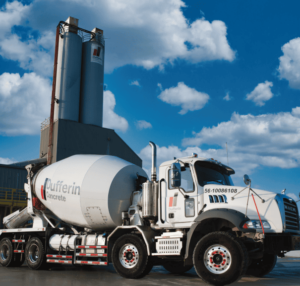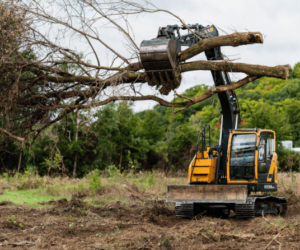Fire Detection Dogs: Trained Heroes in High-Pressure Situations
Fire detection dogs play an indispensable role in safeguarding lives and property. These highly trained canines have an exceptional ability to detect even the faintest traces of accelerants, making them invaluable assets in fire investigations. What truly sets them apart is their capacity to perform under high-pressure situations, showcasing their discipline, focus, and unparalleled skill. Let’s explore how these incredible animals excel in their demanding roles.
Unique Abilities of Fire Detection Dogs
Fire detection dogs possess olfactory senses that are exponentially more sensitive than those of humans. This extraordinary sense of smell allows them to identify substances like gasoline, kerosene, and other accelerants that might indicate arson. However, their effectiveness goes beyond biology. Rigorous training ensures they can operate effectively in chaotic, high-stress environments, such as the aftermath of a fire.
During emergencies, these dogs are often surrounded by sirens, smoke, and debris. Despite such distractions, they remain laser-focused on their task. Their training includes exposure to these conditions to ensure they remain calm and efficient. Firefighters and investigators rely on these canines to provide critical evidence that can turn the tide in arson investigations. Their ability to remain composed under pressure not only speeds up the investigative process but also increases the accuracy of findings.
How Fire Detection Dogs Are Trained
Training fire detection dogs is an intensive process that begins early in their lives. Selected for their intelligence, drive, and temperament, these dogs undergo months of specialized instruction. Trainers use reward-based techniques to reinforce behaviors, ensuring the dogs associate detecting accelerants with positive outcomes.
Fire detection dogs are introduced to various environments to simulate real-life scenarios. They practice working in smoky, loud, and crowded spaces, which prepares them for the chaotic conditions of an actual fire scene. This type of conditioning ensures they can focus on their task regardless of external distractions. By the time their training is complete, these dogs are equipped to handle the unpredictable nature of fire investigations.
Moreover, these canines form strong bonds with their handlers, which enhances their effectiveness. The partnership between dog and handler is crucial, as clear communication and mutual trust are essential in high-pressure situations. Handlers also undergo training to understand their dog’s signals and behaviors, ensuring seamless teamwork on the field.
Role of Arson Detection Dogs in Investigations
Trained arson detection dogs are integral to solving complex fire cases. These specialized canines can detect minute traces of accelerants, often uncovering evidence that might be invisible to human investigators. This capability is critical in arson investigations, where identifying the cause of a fire can lead to uncovering criminal intent.
These dogs’ contributions are not limited to detection. Their presence often speeds up investigations, allowing authorities to determine the fire’s origin faster and more accurately. This efficiency is particularly valuable in high-pressure cases where time-sensitive decisions need to be made. Fire detection dogs’ accuracy also reduces the likelihood of errors, ensuring that justice is served.
It’s important to recognize the dedication of these animals and their handlers. The work they do is physically and emotionally demanding, requiring them to navigate hazardous environments while maintaining focus. Their commitment ensures that fire victims receive answers, and perpetrators are held accountable for their actions.
Why Fire Detection Dogs Excel Under Pressure
The ability of fire detection dogs to perform in high-pressure situations is no accident. It is the result of careful selection, rigorous training, and continuous reinforcement. These dogs are exposed to controlled stressors during their training, allowing them to adapt to the unpredictability of real-world scenarios.
Their calm demeanor in emergencies is a testament to their training. Whether they are navigating debris-filled spaces or working amidst the chaos of a fire scene, these dogs remain unfazed. Their handlers play a pivotal role in maintaining this composure, providing reassurance and direction when needed.
The psychological and physical resilience of fire detection dogs is another factor in their success. They are trained not only to detect accelerants but also to stay focused in environments where others might falter. This resilience ensures they can provide accurate results even in the most challenging circumstances, making them indispensable in fire investigations.
Future of Fire Detection Dogs
The contribution of fire detection dogs to public safety cannot be overstated. Their work has solved countless arson cases, saved lives, and prevented further tragedies. As technology advances, these dogs continue to complement forensic tools, bridging the gap between traditional methods and modern innovations.
Looking ahead, ongoing research aims to enhance the training and efficiency of fire detection dogs. Programs are exploring new ways to refine their skills, including advanced scent detection techniques and improved handler-dog communication. The future holds great promise for these incredible animals, ensuring their legacy as indispensable assets in fire investigation remains strong.
Fire detection dogs are true heroes, trained to excel in the most demanding situations. Their unparalleled abilities, combined with the dedication of their handlers, make them an essential part of fire safety and investigation. Through rigorous training and unyielding focus, they continue to protect communities and uncover the truth in the face of adversity.














Post Comment